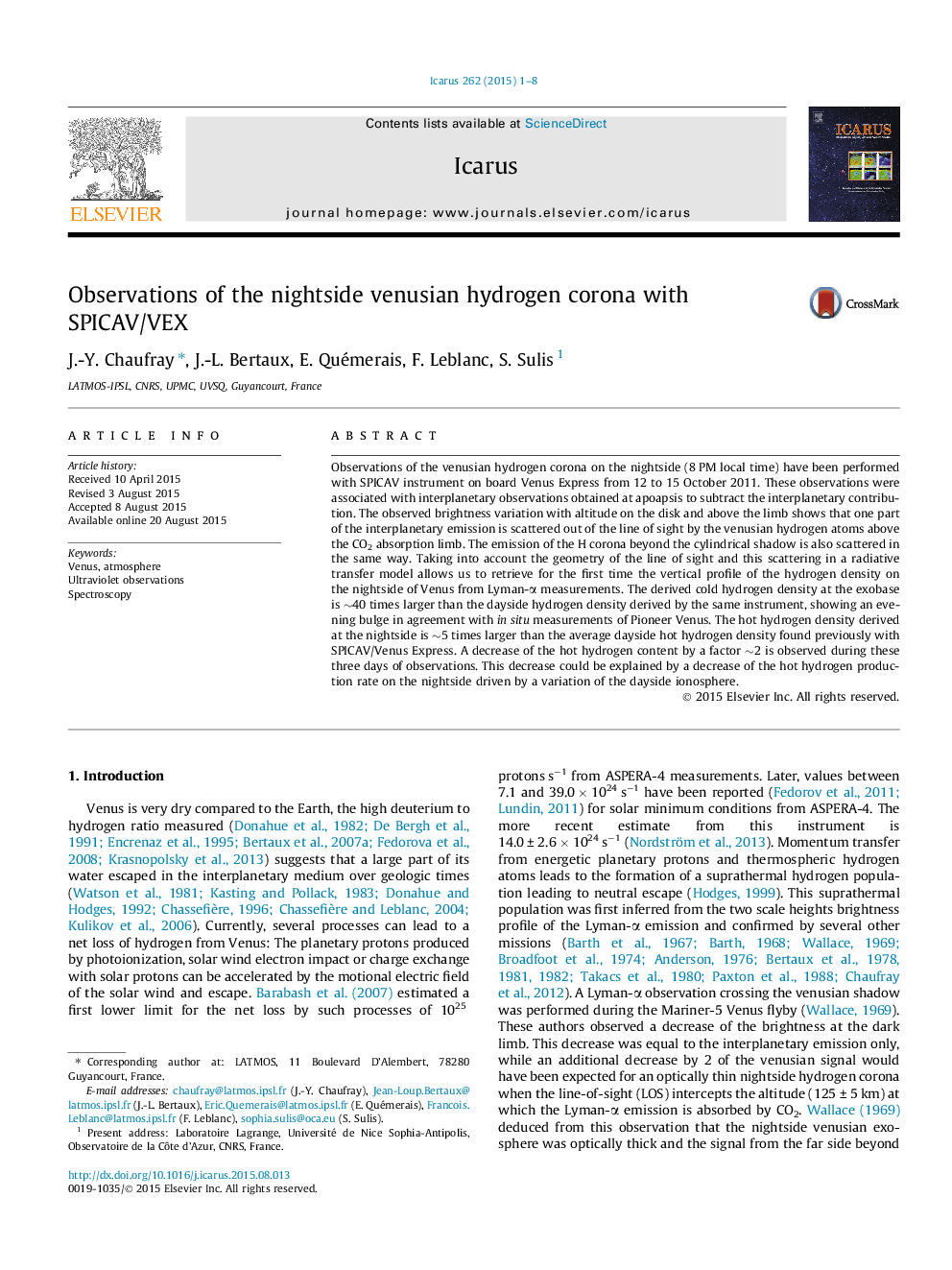| Article ID | Journal | Published Year | Pages | File Type |
|---|---|---|---|---|
| 1772974 | Icarus | 2015 | 8 Pages |
Abstract
Observations of the venusian hydrogen corona on the nightside (8 PM local time) have been performed with SPICAV instrument on board Venus Express from 12 to 15 October 2011. These observations were associated with interplanetary observations obtained at apoapsis to subtract the interplanetary contribution. The observed brightness variation with altitude on the disk and above the limb shows that one part of the interplanetary emission is scattered out of the line of sight by the venusian hydrogen atoms above the CO2 absorption limb. The emission of the H corona beyond the cylindrical shadow is also scattered in the same way. Taking into account the geometry of the line of sight and this scattering in a radiative transfer model allows us to retrieve for the first time the vertical profile of the hydrogen density on the nightside of Venus from Lyman-α measurements. The derived cold hydrogen density at the exobase is â¼40 times larger than the dayside hydrogen density derived by the same instrument, showing an evening bulge in agreement with in situ measurements of Pioneer Venus. The hot hydrogen density derived at the nightside is â¼5 times larger than the average dayside hot hydrogen density found previously with SPICAV/Venus Express. A decrease of the hot hydrogen content by a factor â¼2 is observed during these three days of observations. This decrease could be explained by a decrease of the hot hydrogen production rate on the nightside driven by a variation of the dayside ionosphere.
Related Topics
Physical Sciences and Engineering
Earth and Planetary Sciences
Space and Planetary Science
Authors
J.-Y. Chaufray, J.-L. Bertaux, E. Quémerais, F. Leblanc, S. Sulis,
